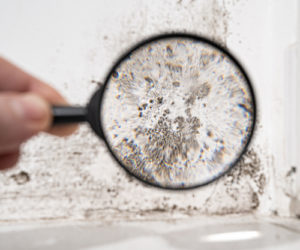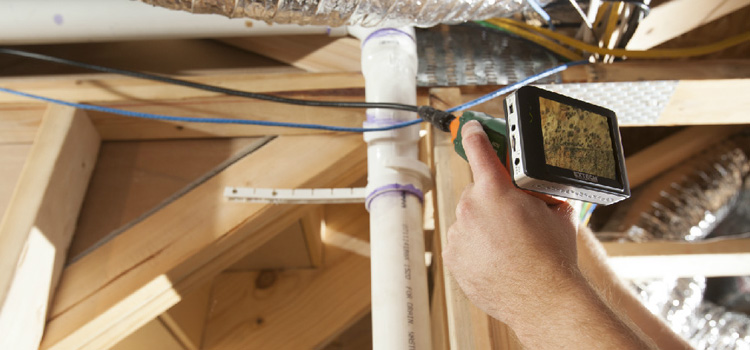Your Ultimate Guide to Post Mold And Mildew Remediation Techniques
In the consequences of mold infestation, understanding just how to efficiently remove the mold and stop its reoccurrence is extremely important for keeping a healthy indoor setting. From selecting the right cleansing and sanitizing techniques to carrying out approaches for long-term mold prevention, each action in the removal trip plays an important function in making sure a successful end result.
Comprehending Post-Mold Remediation Refine
After finishing the mold and mildew remediation process, it is critical to recognize the post-mold remediation strategies that are essential to make sure a complete and efficient clean-up. When the mold has actually been eliminated, the next action includes cleansing and decontaminating the impacted locations to prevent any type of regrowth of mold. This includes utilizing specialized cleaning representatives to wipe down surfaces and eliminate any kind of staying mold and mildew spores. It is vital to dry the location entirely to discourage the growth of mold in the future (Post Mold Remediation). Correct air flow and dehumidification can help in this procedure.
Moreover, conducting a final evaluation post-remediation is crucial to ensure that all mold has actually been effectively gotten rid of. This examination needs to involve an extensive visual check as well as perhaps air tasting to validate the lack of mold and mildew spores in the air. Extra removal may be required if the evaluation exposes any kind of remaining mold. Educating residents on precautionary actions such as controlling moisture levels and without delay addressing any water leakages can aid maintain a mold-free atmosphere.
Efficient Cleaning Up and Sanitizing Methods

Avoiding Future Mold Development

Relevance of Correct Ventilation
Proper ventilation plays an essential function in protecting against dampness accumulation, a crucial aspect in mold and mildew development within indoor atmospheres. Reliable ventilation systems aid remove excess moisture from the air, lowering the opportunities of mold and mildew spores locating the dampness they require to sprout and spread out. Without ample air flow, interior areas can become a breeding place for mold and mildew, causing potential health threats and structural damage.
By guaranteeing proper air flow, ventilation systems can also help in drying out moist areas a lot more promptly after water damages or flooding events, further discouraging mold and mildew development. testing air quality after mold remediation. Precede like bathrooms, kitchen areas, cellars, and attics where dampness levels often tend to be higher, mounting and keeping efficient air flow systems is vital in preventing mold infestations

Surveillance and Maintenance Tips
Provided the vital role that appropriate air flow plays in avoiding mold growth, it is crucial to establish effective tracking and maintenance pointers to ensure the ongoing capability of ventilation systems. Normal examinations of ventilation systems should be carried out to check for any kind of indications of blockages, leaks, or breakdowns that can impede correct air flow. Tracking moisture levels within the property is likewise vital, as high moisture look here can add to mold and mildew growth. Installing a hygrometer can aid track humidity levels and alert property owners to any kind of spikes that may need attention. Furthermore, ensuring that air filters are consistently cleansed or changed is necessary for maintaining the effectiveness of the air flow system. Executing a routine for routine maintenance jobs, such as duct cleaning and cooling and heating system inspections, can assist stop problems prior to they escalate. By staying proactive and conscientious to the problem of air flow systems, homeowner can effectively reduce the danger why not look here of mold regrowth and keep a healthy indoor atmosphere.
Conclusion
To conclude, post-mold removal techniques are necessary for making sure a tidy and safe environment. Recognizing the process, implementing efficient cleansing and sanitizing approaches, stopping future mold development, maintaining appropriate air flow, and routine tracking are all important action in the removal procedure. By following these guidelines, you can efficiently get rid of mold and mildew and stop its return, promoting a healthy living or functioning room for all passengers.
In the aftermath of mold infestation, recognizing just how to successfully get rid of the mold and mildew and avoid its reoccurrence is extremely important for maintaining a healthy interior atmosphere. As soon as the mold and mildew has actually been removed, the next step involves cleansing and sanitizing the influenced locations to prevent any regrowth of mold and mildew - Post remediation mold testing near me. After removing noticeable mold and mildew development, it is essential to cleanse all surface areas in the damaged location to remove any type of continuing to be mold spores. To additionally enhance mold and mildew avoidance actions, it is important to attend to underlying concerns that originally led to mold development.Provided the crucial role that proper ventilation plays in preventing mold and mildew growth, it is critical to develop reliable tracking and maintenance suggestions to guarantee the continued performance of ventilation systems